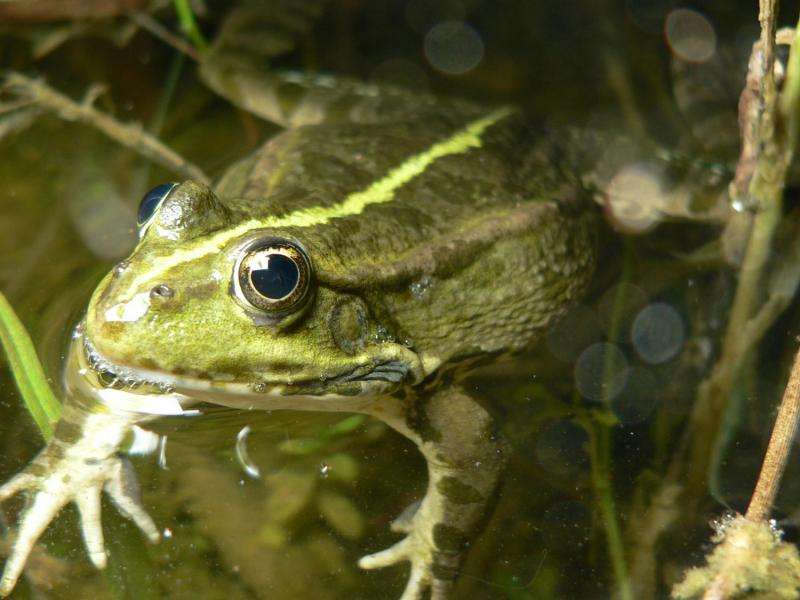Invasive water frogs too dominant for native species

In the past two decades, water frogs have spread rapidly in Central Europe. Using a new statistical model, researchers from the University of Basel were now able to show that local species such as the Yellow-bellied Toad and the Common Midwife Toad are suffering from the more dominant water frogs. The journal American Naturalist has published their results.
The composition of species communities can change considerably over time, often due to human influences. Even though these changes have led to the decline of many species, some have also been able to benefit. Such so-called invasive species then may either hunt other species or replace them in their natural habitat. Some of the most invasive amphibians belong to the water frog species complex. The Eurasian Marsh Frog, native to Eastern Europe, has become particularly dominant in Switzerland in past years. Humans are to blame for this development, as they began to import the frog species to Central Europe for consumption beginning of the 1960s.
The Basel zoologists Tobias Roth, Christoph Bühler and Valentin Amrhein have now used the data of over 1000 bodies of water in the Swiss Canton Aargau in order to study the impact of water frogs on native amphibians using a new statistical model. The cantonal Amphibian Monitoring Aargau supplied the necessary observational data.
However, such data is often difficult to interpret: If, for example, there are only few observations of a species, does that mean that the species is actually rare or is it only observed rarely? The statistical model used by the Swiss researchers takes into account the different detection probabilities of species as well as other environmental factors.
Native toads in decline
The results show that Yellow-bellied Toads and Common Midwife Toads have smaller communities whenever water frogs are also present at the same body of water. "Based on our analysis we estimate that the populations of both species would be up to five times bigger without the water frogs' presence," says Christoph Bühler, Head of Amphibian Monitoring Aargau.
In case of such a competitive situation, caused by human influences, conservationists have to decide whether they should intervene with regulatory measures. Because the influence of the invasive Marsh Frog on the native species is great, some measures against the dominant frog could be indicated in order to protect the populations of local species.
Evaluating the situation is however further complicated due to the fact that it is not only the Eurasian Marsh Frog heating up the competition for habitat. Crossings between the Marsh Frog and native amphibians have led to closely related water frog hybrids that are also acting invasive and that cannot, due to mixed genetic material, be clearly identified as alien.
"What is clear, however, is that the changes in the landscape currently favor water frogs," says Valentin Amrhein from the Department of Environmental Sciences at the University of Basel. "Small waters that dry out quickly and are being avoided by water frogs but sought after from other species have become rare these days. The spread of invasive species is often supported, consciously or unconsciously, by the actions of humans and cannot easily be undone."
More information: Tobias Roth et al. Estimating Effects of Species Interactions on Populations of Endangered Species, The American Naturalist (2016). DOI: 10.1086/685095
Journal information: American Naturalist
Provided by University of Basel




















